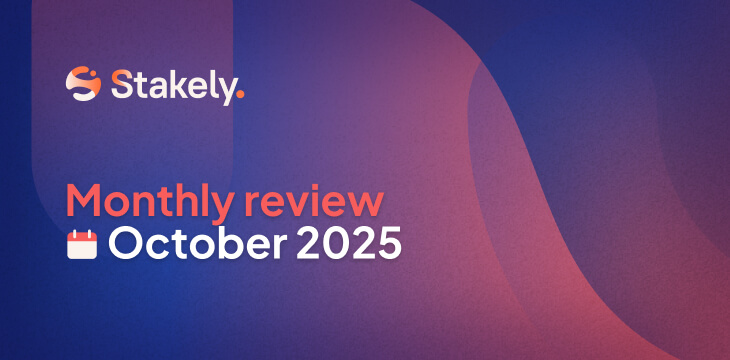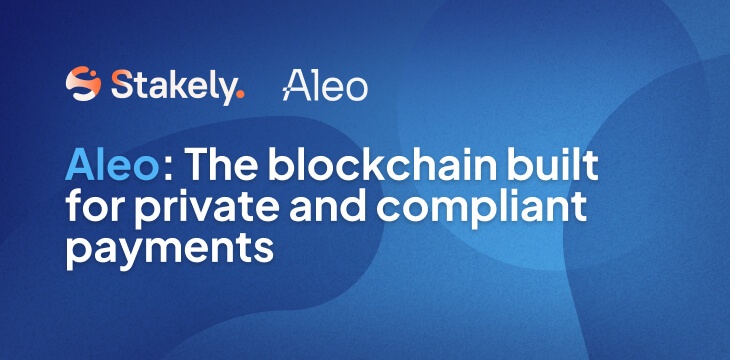Story: the L1 for programmable IPs in the AI era
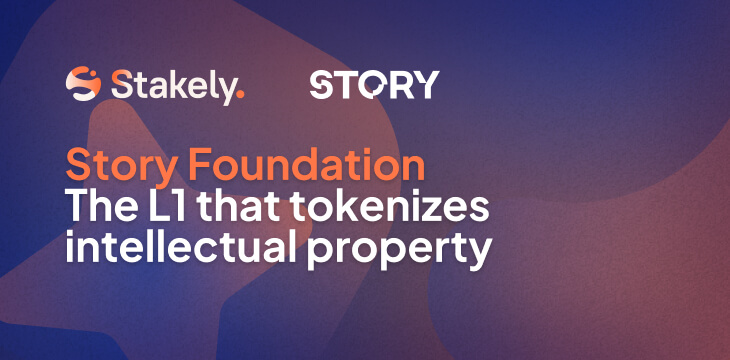
Story is a layer 1 blockchain designed to register, license, and monetize intellectual property and data with on-chain executable rules. At Stakely, we’ve joined its validator set to help strengthen network security and contribute our expertise in the space.
In this article, we’ll share why we chose to become a Story validator—and why you might want to get involved too.
What is Story and what sets it apart?
Story was created with the mission of becoming a global and transparent repository of intellectual property (IP), where anyone can register creative assets or datasets, define usage conditions, and enforce them automatically through smart contracts.
Its goal is to serve as an IP settlement layer, interoperable with other ecosystems.
In practice, a song, character, brand, image, or model can be registered as an IP Asset and licensed under clear rules for distribution and royalties.
This way, Story tackles one of the main challenges of artificial intelligence: access to data with well-defined rights and verifiable traceability.
Story Architecture: EVM for building, graph for querying
Story is an EVM-compatible L1, designed for graph-like data structures that represent relationships between works, derivatives, licenses, and payments.
The network combines the best of EVM with Cosmos SDK infrastructure, using CometBFT as its consensus mechanism.
It also includes execution layer optimizations that allow for efficient traversal of IP graphs.
To improve performance, it integrates precompiles that reduce gas costs for complex operations—a key improvement when many licenses or payments stem from the same asset.
How the architecture works
Each piece of intellectual property is represented as an IP Asset and its corresponding IP Account, a smart contract that acts as the primary identity of that IP.
These can be linked to modules that extend their functionality, such as creating derivatives, resolving disputes, and automating revenue flows between them.


Let’s take a closer look at each layer:
1. Data model: IP Assets and IP Accounts
- IP Asset: each registered IP is represented as an ERC-721.
- IP Account: when registering an IP Asset, a token-bound account based on ERC-6551 is deployed. This account acts as the asset’s programmable “brain.” From here, permissions to interact with modules (licenses, royalties, disputes) are managed and data is stored.
In this way, Story’s model turns each work into an executable entity, capable of licensing itself, collecting, and distributing revenue to its derivatives autonomously.
2. Native modules: from rights to execution
- Programmable IP License (PIL): an off-chain legal template created by Story and mapped on-chain, allowing parameters like “commercial use,” “derivatives,” or “attribution” to be machine-readable and enforceable by contracts.
- Dispute Module with UMA Optimistic Oracle: arbitrates disputes over terms or outcomes using a propose–dispute–resolve mechanism and verification via UMA’s DVM.
- Proof-of-Creativity: a native framework that traces attribution and derivation relationships in creative graphs, aligned with the goal of fair attribution and monetization.
IP Token and tokenomics
The IP token of Story is designed for the new era of AI-powered assets. With a maximum supply of 1,000,000,000, it serves essential roles within the ecosystem: it’s used for gas payments, enables staking under a PoS model, and allows participation in the chain’s governance.
Initial distribution:
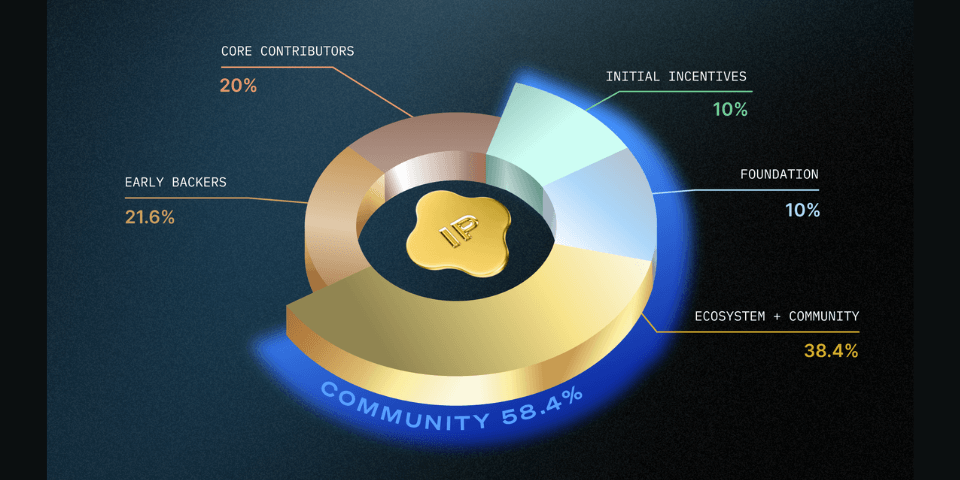

But what really sets it apart is its fair launch model, which avoids insider advantages.
There are no early participation rewards for the foundation or first contributors; instead, the community began receiving staking rewards at the same time as everyone else.
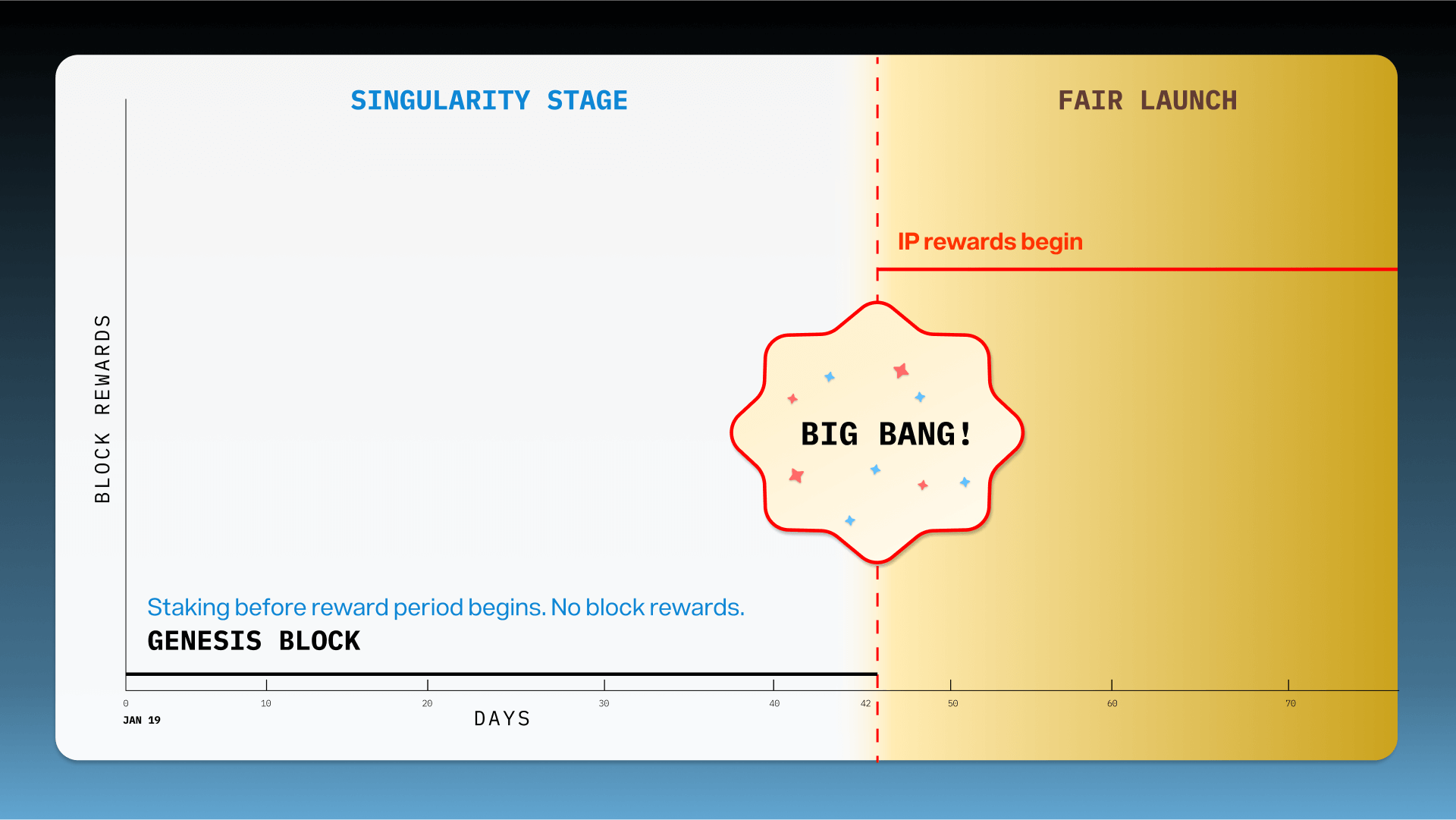

What does Story bring to the Web3 and AI ecosystem?
Story delivers an infrastructure layer that connects brands, creators, and developers with the AI economy: it integrates brand IPs like Crocs and Adidas through tokenization with programmable licenses; collaborates with Stability AI to track contributions and distribute revenue in generative outputs, with examples like Mahojin and ABLO focused on remix and co-creation; and for mainstream developer onboarding, it offers Crossmint StoryKit with frictionless experiences, APIs to register IP, issue licenses, and monetize.
If we had to highlight some of its contributions to Web3, we’d choose:
- Machine-readable law: PIL translates legal terms into on-chain states and events, aligning code and law to make usage terms enforceable.
- Transparent economic graph: each work and its derivatives leave a verifiable trail, enabling automatic royalties throughout the value chain.
- Developer-friendly: EVM-compatible, TypeScript SDK, and composable modules that fit into existing toolchains and shorten time-to-production.
- Clean-rights data: focused on datasets and flows with license compliance—a critical requirement for production-grade AI and auditable models.
Story turns intellectual property into a programmable asset: NFT-based registration, machine-readable licenses, automatic royalties, verifiable attribution, and on-chain arbitration.
- For developers, it offers an EVM stack with production-ready modules.
- For stakers, it’s an L1 with a token of real utility at the heart of the AI economy.
Without a doubt, we see Story as an infrastructure that fosters fairer value creation and distribution.
👉 Stake IP with Stakely and help us build a more open, fair, and programmable AI economy!

